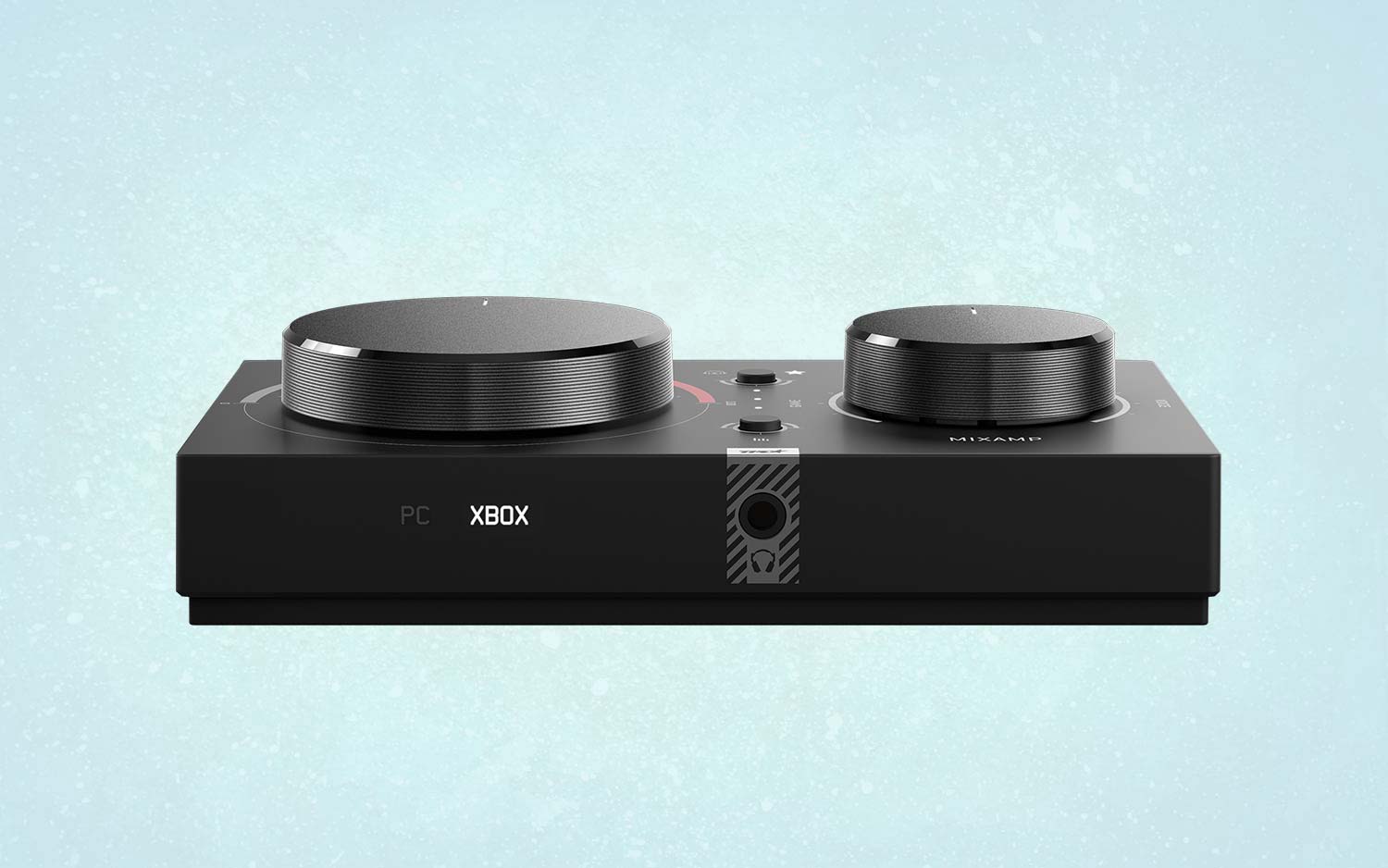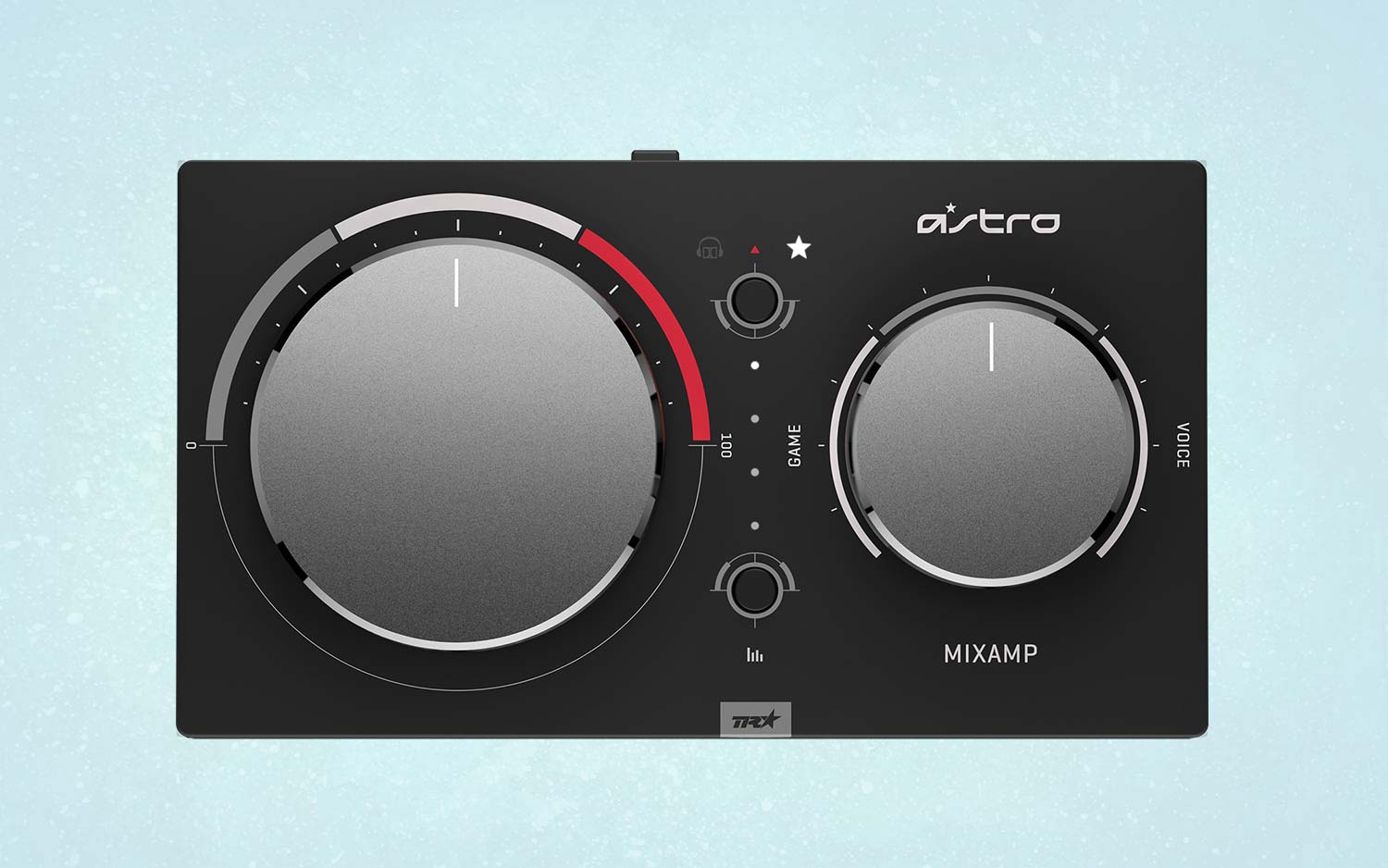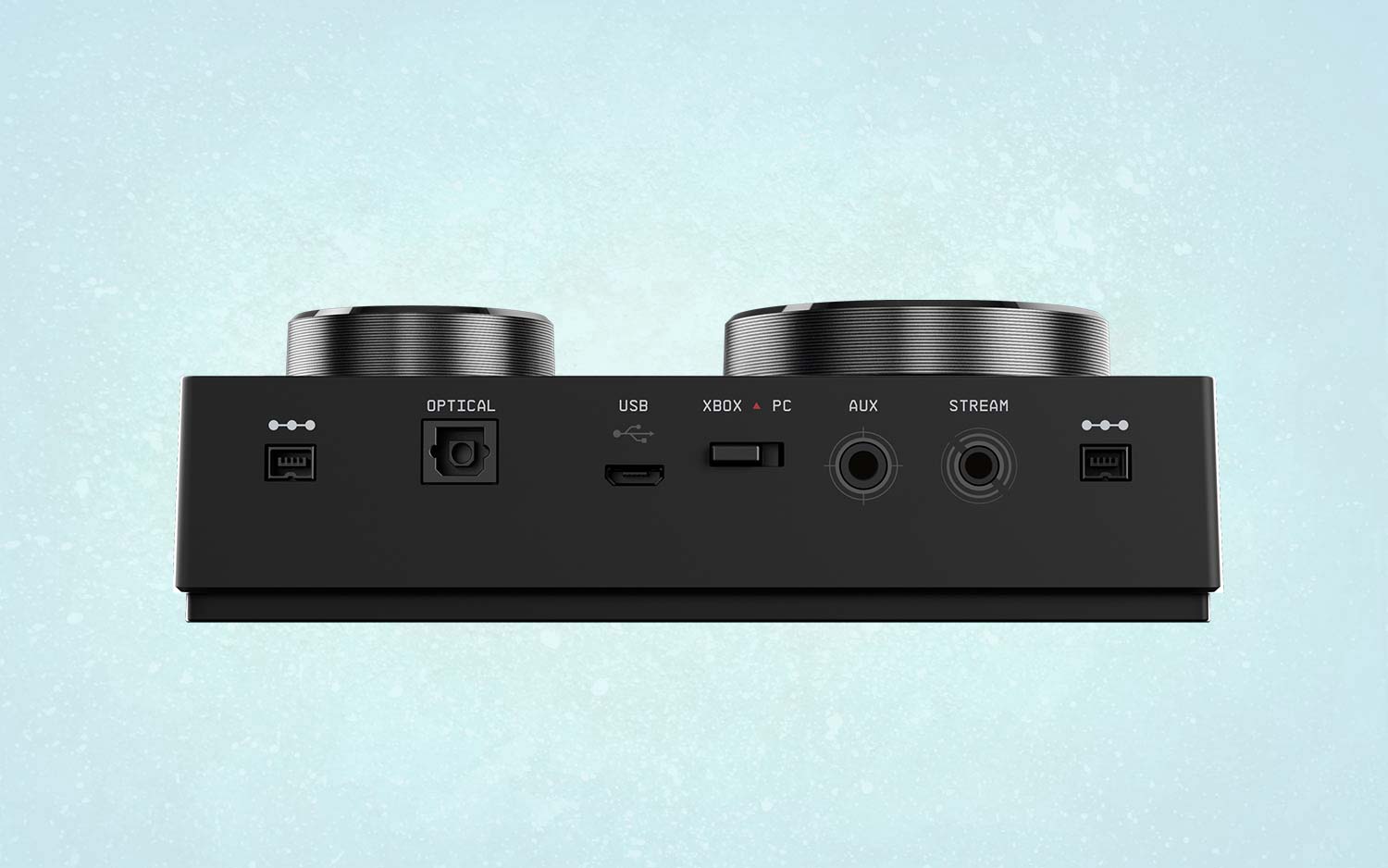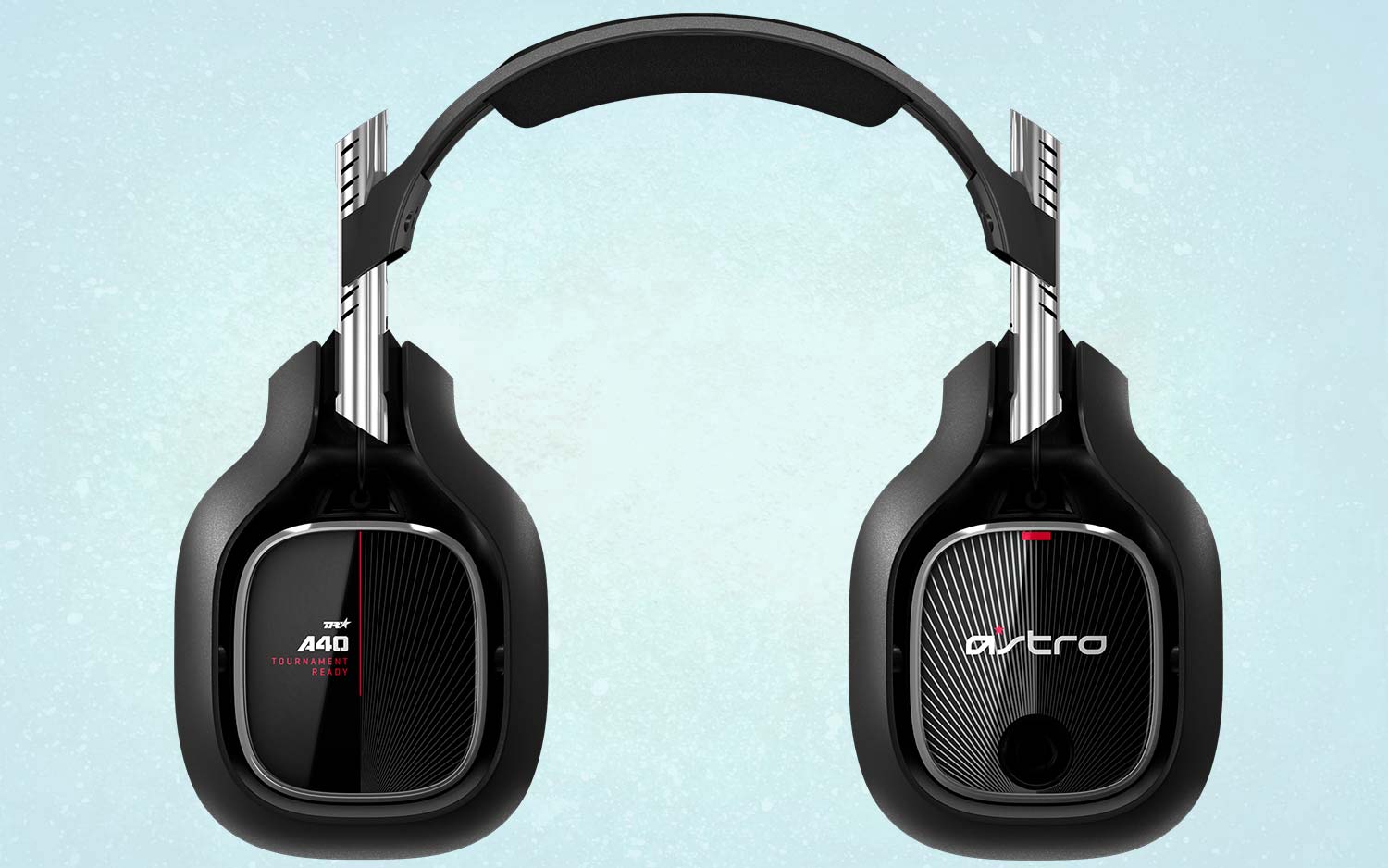Tom's Guide Verdict
Pick up the Astro A40 + MixAmp if you want to do some serious gaming or streaming from a desk setup. If you game primarily in the living room, though, you may want a wireless option instead.
Pros
- +
Excellent sound
- +
Intuitive amp
- +
Comfortable fit
- +
Good for both PC and consoles
Cons
- -
Not great for living room setups
- -
Expensive
Why you can trust Tom's Guide
The Astro A40 is a very good gaming headset, but even at $150, it's not exactly a premium experience all around. You can't tweak equalization options, listen to surround sound or adjust the game/chat balance. What's an audiophile, or competitive gamer or streamer, to do?
Well, for one thing, they could try the Astro A40 + MixAmp Pro package. This $250 box set combines the unflappable A40 with a newly redesigned MixAmp Pro amplifier. Rather than simply plugging the A40 into your PC, PS4 or Xbox One, you'll run it through the amp, which improves the sound quality considerably and gives you a plethora of customization options.
There's no denying that the A40 + MixAmp is expensive and has a somewhat convoluted setup. But the sound quality is gorgeous, and the customization options are thorough without getting overwhelming. While the A40 + MixAmp may not actually play that nicely with a traditional living-room setup, streamers and those who have dedicated gaming nooks will find great sound and versatile features right at their fingertips.
Design
The first thing you'll notice when you crack open the A40 + MixAmp box is that there are a lot of wires and parts.
First, there's the A40 headset itself, which has two reasonably sized fabric ear cups, a strong plastic headband; a detachable, flexible boom mic on the left earcup; and a removable, 3.5mm audio cord. You can customize the fit by sliding the headband up and down a metal tube on either side, with clearly demarcated notches. There are also swappable ear-cup plates (these are purely aesthetic) and a mic-mute button about halfway down the audio cord. Overall, it's a solid design that's stood the test of time.

Then, there's the MixAmp, which has seen a considerable redesign since last gen's model. (This is the fourth-generation MixAmp, for those of you who have been following Astro's gear for some time.) Instead of a vertical rectangle with one huge dial and one tiny button, the new MixAmp has a horizontal layout with a helpful diagonal incline.
Get instant access to breaking news, the hottest reviews, great deals and helpful tips.

There are still two dials: one for overall volume and one for game/chat volume, but this time, the chat dial is much bigger, which makes it easier to gauge your levels. Between the dials, there's one button on top that switches between surround and stereo sound and one button on the bottom that switches among four equalization settings. It's all quite intuitive and easy to use.
The A40's solid design has stood the test of time.
The back of the MixAmp is where things get confusing, though. There's a button that switches inputs between PS4 and PC (or Xbox and PC, depending on which version you buy. We reviewed the PS4 version). This is straightforward enough. But then there are ports for optical audio, USB, auxiliary audio, streaming audio and — believe it or not — two FireWire daisy chains. The MixAmp comes with 3.5mm audio, USB, optical audio and daisy-chain cables in the box, but if you want a more complicated setup, you'll have to bring your own cables to the party. Clearly, a truly dedicated audiophile could do a lot with the A40 + MixAmp.
Wires, wires everywhere
For the average user, though, the USB and optical audio ports are the only really important ones here. If you attach the setup to your PC, you run the USB cable from your computer to the amp, then an audio cable from the amp to the headset. If you want to use a PS4, it's a little more complicated: Hook the optical audio cable into the back of the PS4; hook the USB cable into the front of the PS4; then attach both wires to the back of the amp and a headset audio cable in the front.

Managing the software can be a little complicated, too, but I'll get to that in a bit. The bigger issue is that if you use a living room setup for your console, the setup is simply not very practical. I brought the A40 + MixAmp home to test how well it performed under real-world circumstances. The sound was great; the positioning was not.
The soundscape is rich and immediate, filling every laser beam, line of dialogue and sweeping orchestral chord with balance and nuance.
I had to jimmy my PS4 out of my entertainment center to connect the optical audio cable, which proceeded to wrap around the side of the console like an underachieving boa constrictor. Then, the optical audio cable and the USB cable paid out all the way to my makeshift coffee table (four cardboard boxes stacked side by side; I just moved recently and am waiting on a real one) and connected to the amp.
From the amp, I had to run another wire across the couch up to the A40 on top of my head. That added up to three long wires draped across my living room, just begging for an unsuspecting housemate, spouse, child or pet to trip over them and drag the whole setup down in the ensuing tumble.
MORE: Best Wireless Headphones
I suppose you could mitigate this risk by taking apart the setup each time you're done using it, but that's rather inconvenient. Similarly, if your PC and PS4 aren't right next to each other, it's a pain to constantly transport the audio setup from one system to the other. Instead, I think the A40 + MixAmp is simply a better option for streamers. They can make full use of the amp to adjust game, chat and broadcast audio volume all at once, and they tend to have more-compact, predictable physical setups. This headset should also work fine if you keep your PC and PS4 close together in a small space.
Comfort
The A40 would not have lasted this long on the market without a redesign if it weren't as comfortable as it is. While I don't love that you have to take it off of your head to adjust the fit, everything else about this headset works very well. The ear cups are plush but not too big, and nothing presses down too hard, thanks to a padded, lightweight headband.

I handed the A40 off to a co-worker, who also found the headset comfortable but noted that it's not quite as light as it looks. (This is true, and it's probably due to the metal bars that connect the ear cups to the headband.) But he also didn't have any issue wearing the A40 for more than an hour, which is a promising start to any gaming session.
Gaming Performance
In spite of its potentially awkward setup, the A40 + MixAmp positively shines once you get it up and running with a game. The soundscape is rich and immediate, filling every laser beam, line of dialogue and sweeping orchestral chord with balance and nuance. I tested the setup with both PC games and PS4 titles, and the results were remarkably consistent. The guttural cries of Zerg in StarCraft: Remastered, the whooshing strokes of a sword in Sekiro: Shadows Die Twice and the witty Mediterranean banter in Assassin's Creed Odyssey all sounded fantastic.
The equalization options are robust and just begging for you to dive in and create some profiles for yourself.
Furthermore, the A40 + MixAmp is one of the few headsets I've used to really nail surround sound. Plenty of headsets have excellent stereo, but the surround sound always feels a little too quiet, hollow or distant. That's not the case with the A40 + MixAmp, in which the surround sound is just as clear and vibrant as its stereo counterpart. I still turned to stereo often — not every game is optimized for surround, after all — but I at least liked having the option.
Features
Most of the A40 + MixAmp's features are baked right in to the hardware: the surround sound, the game/chat balance and the equalization switching. These equalization options are robust and just begging for you to dive in and try to create some profiles for yourself.
By default, the MixAmp lets you choose from among Astro, Flat, Balanced and Tournament equalization modes. But you can also use the Astro Command Center software to customize your own equalization options. It's easy to do, and the equalization options save to your MixAmp directly, so even after you disconnect the headset from a PC, you can still use the profiles you've programmed.
You can also change a variety of mic settings, including side tone and sensitivity. The Astro Command Center includes some helpful mic pickup options, including Home and Night modes, which dictate how loudly you have to speak in order for the mic to hear you. This is an extremely helpful feature for both tournament players, who need to communicate in loud environments, and everyday night owls, who want to communicate with teammates without waking up the rest of the household.
The mic itself is also excellent, transmitting crisp and clear audio without much distortion or fuzziness. It's not quite good enough to record a podcast, but you'll be able to communicate with your online teammates effortlessly, particularly in conjunction with the game/chat dial.
Music Performance
One area in which the MixAmp really proves its worth is in how it handles music. Thanks to subtle equalizations and a robust soundscape, music sounds fantastic, from the bluegrass beats of Old Crow Medicine Show to the rhythmic rhymes of The Rolling Stones. I listened to everything from Flogging Molly to G.F. Handel, and every genre of music sounded crisp and lifelike.
MORE: Best Gaming Headsets
My only complaint is that once you unplug the A40 from the MixAmp, the music performance goes back to being just so-so — and if you want to take the A40 on a bus or a plane, you'll probably use it without the MixAmp. Yes, you can plug it directly into a phone or a Nintendo Switch, but it just won't sound as good. This is a shame, especially considering that the A40 looks pretty sleek and the removable microphone makes it suitable for everyday travel.
Bottom Line
The A40 + MixAmp is a very expensive audio setup. It doesn't work that well for living room configurations, and the sound quality without the amp is variable. Nonetheless, I enjoyed every minute I spent gaming with the device.
For $250, you get a customizable amp and stellar audio for both games and music. I wish the setup were a little more convenient for living room gamers, but I also don't think I'm necessarily the device's target audience. The A40 + MixAmp seems to have a streamer or tournament customer in mind, and it's not hard to see how the headset could be a real boon for someone like that.
In the same price range, the SteelSeries Arctis + GameDAC ($250) is very similar, both in quality and functionality. However, the Astro A40 + MixAmp accomplishes exactly what it sets out to do. If it sounds like your kind of peripheral, it probably is, and you shouldn't hesitate to pick one up.
Credit: Astro

Marshall Honorof was a senior editor for Tom's Guide, overseeing the site's coverage of gaming hardware and software. He comes from a science writing background, having studied paleomammalogy, biological anthropology, and the history of science and technology. After hours, you can find him practicing taekwondo or doing deep dives on classic sci-fi.

